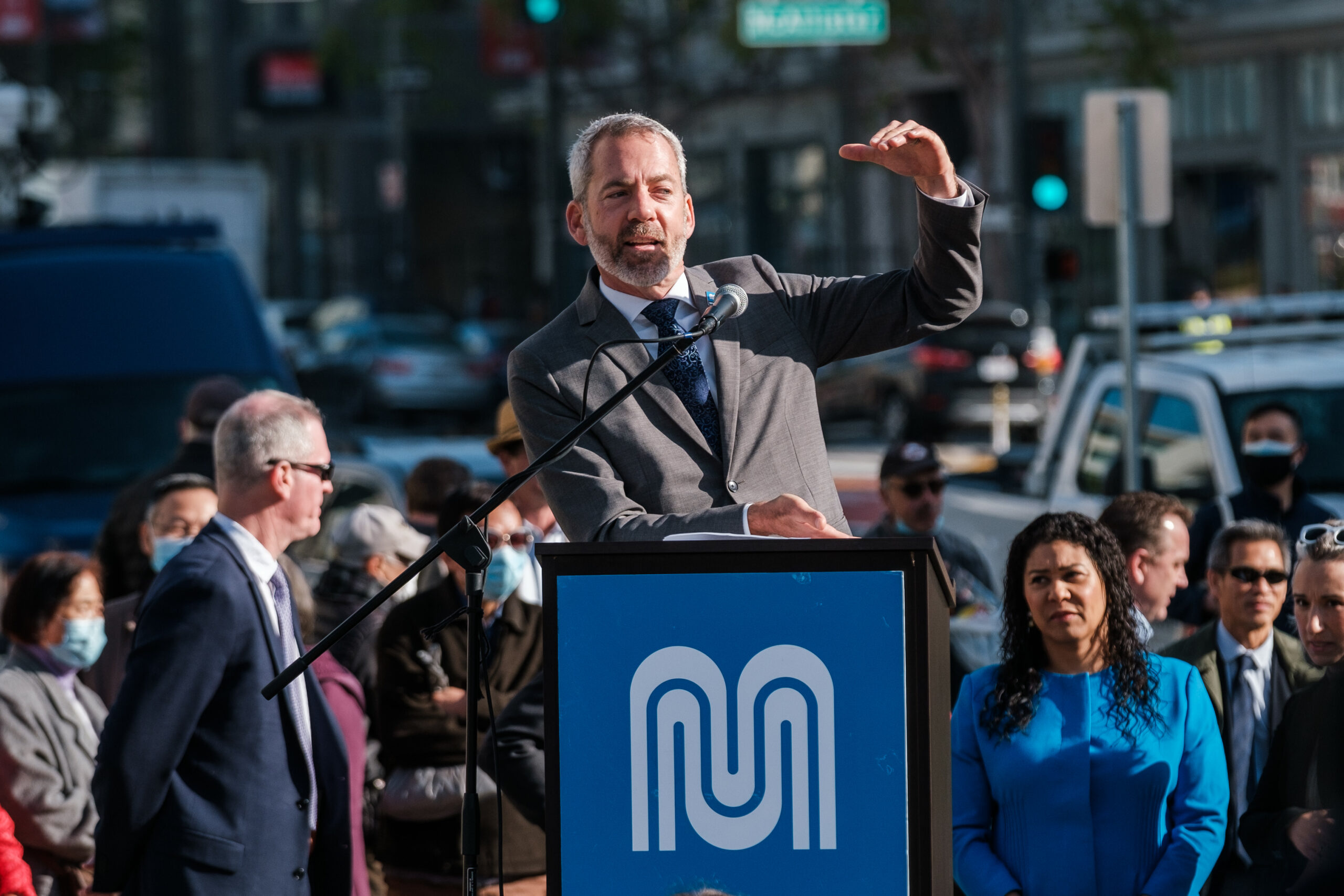Six months. That’s how long Caltrain can stretch federal funding to cover its operations if it can’t refill its coffers. The San Francisco Municipal Transportation Agency and BART, meanwhile, each have about two years to get their money right.
Public transit ridership has not recovered since plummeting during the pandemic, and the Bay Area’s major transit agencies are barreling toward the edge of a fiscal cliff.
To prevent a budgetary freefall, they’re gearing up for a tough ask—of voters, the state Legislature and the federal government—to help cover operating costs and invest in the future.
“We’re doing this for the people that are riding the systems,” Caltrain spokesperson Casey Fromson said. “But we have to be able to pay for those services and the people to run it.”
Empty offices and empty restaurants have left Downtown a shell of what it once was, but half-empty trains, streetcars and buses have steadily eaten away at farebox-reliant transit agencies’ bottom lines and could leave a long-lasting effect on the Bay Area’s post-pandemic recovery.
Ridership for the three major transit agencies cratered at the start of the pandemic and, as remote work continues, remains below half of pre-pandemic levels on weekdays.
Muni, BART and Caltrain plugged deficits with one-time federal relief funding.
Muni has had its structural budget deficit accelerated by the pandemic. Projections show a $76 million budget hole by 2025 as the colossal transit agency struggles to hire enough operators to restore service levels.
“The fiscal cliff was always going to come,” SFMTA spokesperson Stephen Chun wrote in an email to The Standard. “But cost of living, the pandemic and now inflation have resulted in increased cost in a time of weak revenues and significant use of one-time funds.”
BART, also, has managed to spread out its federal funding to last through 2025, after which it faces a deficit in the hundreds of millions per year. And a recent budgeting exercise revealed that cutting weekend service—or any service for that matter—won’t help.
“We have a few years, but in a few years, if we don’t find more revenue, we’re going to have a problem,” BART Director Rebecca Saltzman said.
Caltrain expects to run out of federal funds as early as the summer, and has relied on pandemic-related federal dollars and voter-passed Measure RR, a sales tax that gave Caltrain its first dedicated revenue source, to keep the trains running.
And if no new sources of funding are secured by summer, the agency could resort to cutting service.
“There’s going to need to be hard decisions that are made in the future if we are able to have a sustainable financial path forward,” Fromson said.
Help From Above
Top of mind for transit agency officials is the urgent need to rebuild trust. After San Francisco voters rejected a $400 million bond in June that would have gone to Muni infrastructure, the agency is hustling to restore lines and get projects, like the newly opened Central Subway, across the finish line.
BART, too, is focusing on delivering quality, reliable service to boost revenues.
“I know that my part of the region, when BART comes knocking for a new tax measure, the very first thing that is going to be asked is, ‘What has BART done to make operations of the transit system more efficient?’” BART Director Debora Allen said at a recent board meeting.
All three transit agencies will benefit from the November passage of Proposition L, a measure to renew a half-cent transportation tax. And Measure RR, which passed in 2020, has helped Caltrain keep running.
The SFMTA may ask the city government to intervene, likely a tall order now that San Francisco is facing a $728 million budget deficit of its own. Or it may even get into the housing game to make some cash, although its first effort won’t net the agency much.
But while neither voters nor riders are eager to infuse their budgets with cash, it’s the agencies’ ability to lobby for more money at upcoming state and federal budget discussions that could prevent a worst-case scenario for regional transit.
Caltrain does have a few stopgap options to avoid a total meltdown next year.
There’s a $1.3 billion pot leftover from last year’s state budget surplus that the agency could get access to for its systemwide electrification, a massive capital project that is set to be finished by 2024. That money could free up some dollars now that could move to operations, Caltrain’s Fromson said. It’s also crossing its fingers for additional funding in the federal budget for electrification, which could be announced as early as Friday.
BART and Caltrain, led by the regional Metropolitan Transportation Commission, plan to ask the state Legislature for multiyear gap funding while the agencies plot their next moves.
But a more sustainable solution is needed long-term. Without the federal aid, that leaves the voters or Sacramento. While Caltrain eyes the state, Saltzman, the BART director, said a voter-backed regional measure may be the BART’s best option.
“BART and Caltrain and other agencies, we’re too dependent on the fare box—and we’re too important to the Bay Area,” Saltzman said.
Watch: BART’s Looming Fiscal Crisis Explained In Two Minutes
